From:TheBahamasWeekly.com
The Pow Wow: A Taste of My Native Heritage
By Robbin Whachell, Editor, The Bahamas Weekly
Sep 20, 2012 - 9:16:14 PM
(
An amazing cultural experience, and a wonderful way to get out and connect to Mother Earth.
Video seen above thanks to my sister Jaclynne Wachell.
Boys Youth division dance in their regalia competing for awards at the Kwantlen First Nation Seyem Qwantlen Langley Arts Council 2nd Annual Pow-Wow, August 24-26, 2012, Ft. Langley, BC, Canada. Is is young people like these and those who teach them that keep Canadian culture alive.)
I've noticed the many ways my country has changed during my absence of 13 years. The biggest change was the noticeable influx of cultures from all over the world. The area I live in is predominantly being migrated to by Persians and Asians. I know this because of the people I see each day in my elevator, by those I pass on the street, and by the many businesses popping up all around me that have these ethnic influences. I hear a multitude of languages just walking around my neighbourhood.
Canada is proudly known as a melting pot. So much so, that it's hard today to find 'Canadian' culture depicted, amidst the nations now flooding the country. “Canada’s per-capita immigration rate remains one of the highest in the
world,” said Citizenship, Immigration and Multiculturalism Minister
Jason Kenney. “Immigration has always been a sustaining feature of
Canada’s history and continues to play an important role in building
our country.
In 2011, Canada welcomed 156,077 economic immigrants and 56,419 family class immigrants".
Very interesting for a country that has a population of 34,482,779.
So what is "Canadian culture"? Wikipedia states what I feel is an up-to-date description with this one sentence, "Over centuries, elements of Aboriginal, French, British and more recent
immigrant customs have combined to form a Canadian culture."
Today, the immigrant customs seem to take center stage, and the aboriginal aspects have long since been diluted.
I grew up knowing I had some native roots, but it is interesting that it was not until I was living in The Bahamas that I discovered and actualized my Canadian native status of Metis. Metis' are Indigenous Canadians of a mixed race, and an outcome of European explorers / settlers inter-marrying with native Canadians, or in other words, First Nations and European heritage combined. I get my Metis status from my mother and we are descendents of the Cree and Sioux tribes.
In Canada there are three aboriginal statuses: 1) First Nations 2) Inuit (Arctic region), and 3) Metis (1.25% of the Canadian population).
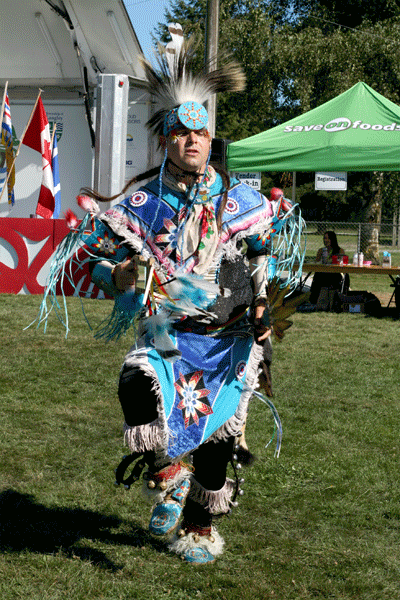
Metis dancer and local dance instructor Wiliam Visser (White Buffalo) won in his category Photo: Robbin Whachell
|
The irony of me finding out about obtaining my status while living in The Bahamas, was that one day I opened to finally read the book, "Bury My Heart at Wounded Knee" by American writer Dee Brown which is a history of Native Americans in the American West in the late nineteenth century. The book opens with Columbus coming to the shores of The Bahamas. I love the fact that the first Bahamians were also Indians. I wrote another piece on my experiences in Grand Bahama
around this awareness in a column called Crossing Borders. Reading Dee Brown's book was an awakening for me. The early plight of First Nation tribes made my heart ache and tears come to my eyes when I learned of their treatment and how over 200 tribes were decimated.
Although my country has become a rich tapestry of cultures, much progress has been made to try and make amends for the atrocities First Nations' people in Canada had to deal with. There have been formal governmental public apologies, reclaiming of Native land, as well as a plethora of services, rights and incentives for people of 'status', many of which my children and I can benefit from today either in the educational system or governmental grant arena. I am proud to say that Canada is a true leader in aboriginal affairs in North American.
So after returning home, imagine my delight one day this summer, when I was out with the females in my family for a British high tea luncheon at a lovely little historic town called
Fort Langley, when we were walking along and just happened on to a Pow Wow (event where both Native and non-Native people meet to
dance, sing, socialize, and honour American Indian culture).
We came across an advert in town and I was so excited to be next walking down a dirt road along the river that led us to a circle in an open field surrounded by Native food, arts and crafts and entertainment from the Kwantlen First Nation Seyem Qwantlen Langley Arts Council's 2nd Annual Pow-Wow.
We enjoyed the variety of dance exhibitions taking place (Fancy, Jingle, Traditional) put on by cute tiny tots, young girls/boys, teens, men and women, and went around to see the wide variety of Native and Metis arts and crafts. The drumming circle was hosted by Blackfish and it was amazing to witness the unity of the men as they sang in Native tongue and pounded the drum skin for the dance exhibitions in powerful unison. The master of ceremonies was Ray Thunderchild who was thoroughly entertaining to listen to, and even sang my sister's friend "Happy Birthday" in his Native language.
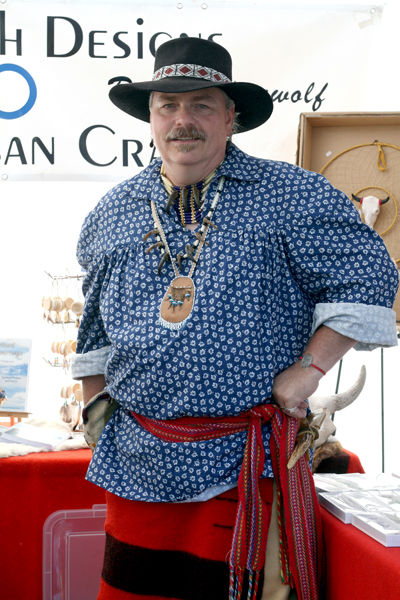
Derrick Whiteskycloud, a Metis and director of the Michif Historical & Cultural Preservation Society (michifmetismuseum.org) in his booth featuring Extra Touch Designs / Metis Artisan Crafts. The word "Metis" comes from the French word "Metissage" which means to mix or combine. Metis are First Nations and European heritage combined. Photo: Robbin Whachell
|
It was a bonding moment for the females of my family, in particular for me to be back home, and here in nature with sisters, nieces, daughters, my mother, and her grandchildren and great grandchildren getting a taste of our Native culture. I was moved to tears as my 78 year old mother went up with my 23 year old daughter to move to the beat with others in the circle, and again was touched deeply as my mother held her 4 year old great granddaughter's hand to go to the blanket in the middle of the circle to to lay money for a donation. It's moments like these you hold in your heart forever.
We met some of the dancers after and I was guilty of breaking pow-wow etiquette by calling dancer, Arnie (Lek'hoosh) Leon's regalia a "costume" (BIG No-No!...gulp... sorry Arnie, I just moved from The Bahamas... we call 'em costumes there :). You are also not supposed to touch an aboriginal dancer's regalia without asking. We asked him if we could take photos as his was one of the most beautiful at the event, and detailed with intricate bead-work.
Time seemed to stand still as we enjoyed dance after dance, until the
circle closed, and it was time to go, and hunger overtook us. We passed on
the native bannock
and purchased some good ole' international french fries and said our
goodbyes after discussing the possibility of dance classes for my
daughter and possibly even me with Wiliam Visser (White Buffalo).
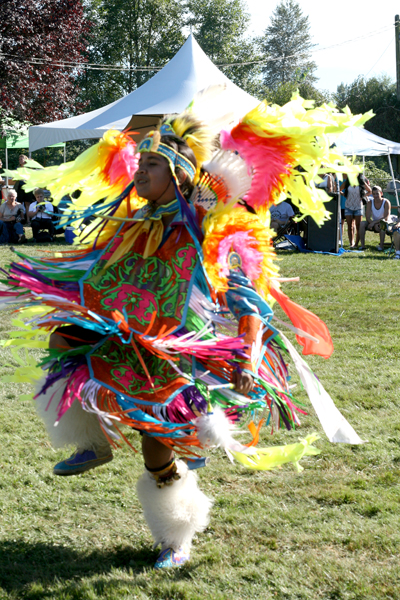
The colour and movement of the Native dance. Photo: Robbin Whachell
|
As the sun started to get low in the sky, feeling very contented, we walked back to the car digesting all we'd just experienced. We passed a cherry tree loaded with ripe berries in the middle of no-where. It reminded me that gifts and abundance are all around us, we just have to be awake to see them, and that the gifts of the earth are there for everyone, no matter what country they are born.
About the author: Robbin
Whachell is a publicist, writer, photo-journalist; and co-founder/
editor of one of The Bahamas' leading news sites, TheBahamasWeekly.com.
Ms. Whachell is a successful entrepreneur and pioneer in online
marketing. Aside from being a recognized media personality and community
builder, she is known for her networking and social media skills, and
has a background in information management and film.She can be
found on Facebook, Twitter, Instagram, LinkedIn, Skype. Reach Robbin by email at Editor@thebahamasweekly.com
Also by Robbin Whachell:
Crossing Borders
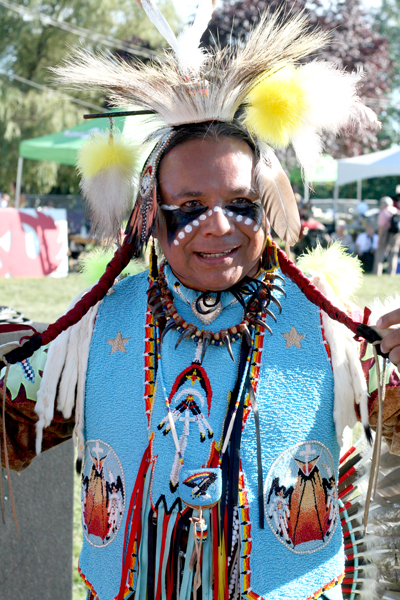
Arnie Leon (Lek'hoosh) shows off his regalia featuring extensive and intricate bead-work. Photo: Robbin Whachell
|
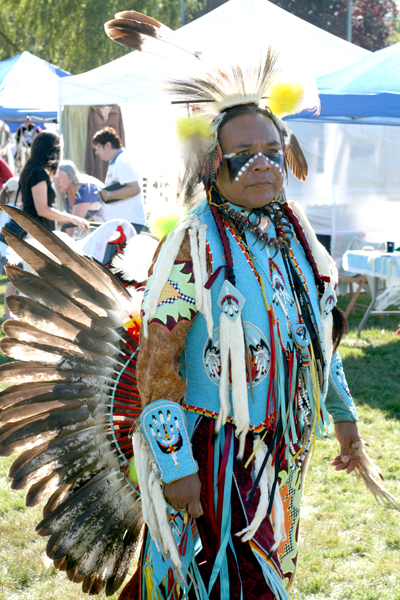
Arnie Leon (Lek'hoosh) Photo: Robbin Whachell
|
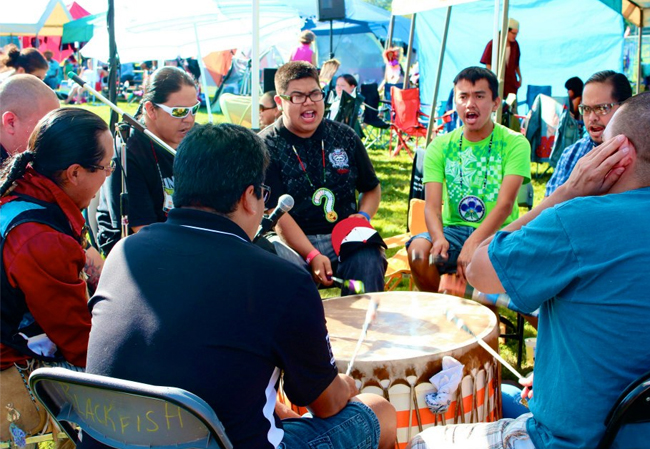
Native drumming circle group, Blackfish (Watch the video at the top of this article to hear their sound) Photo: Jackie Blower
|
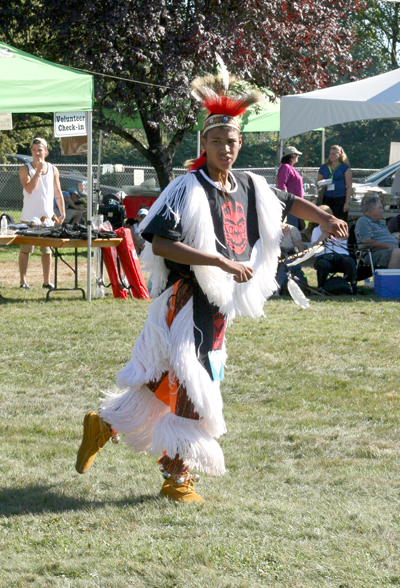
A teen dancer Photo: Robbin Whachell
|
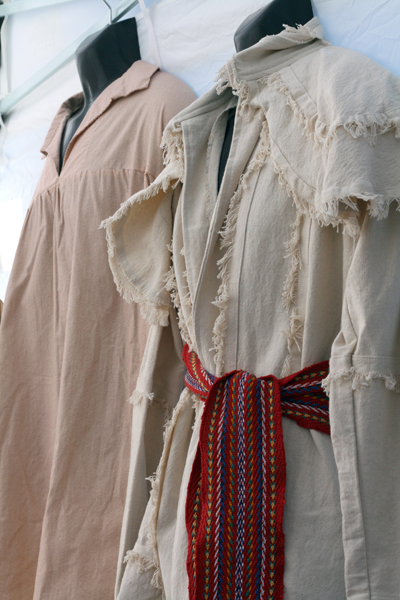
Metis clothing Photo: Robbin Whachell
|
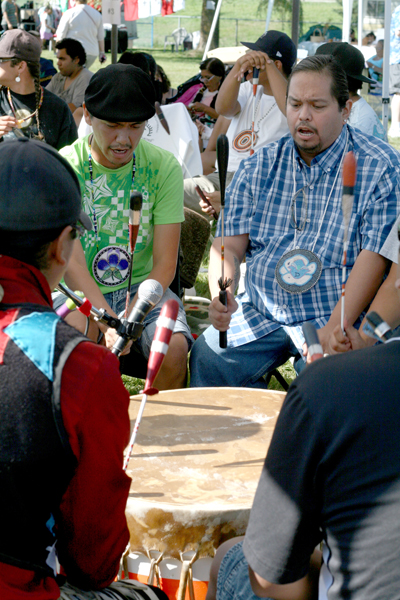
Native drumming circle group, Blackfish Photo: Robbin Whachell
|
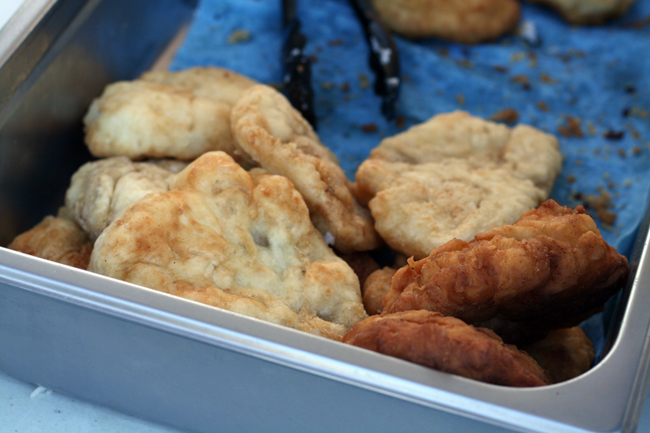
Fried Bannock bread. A native bread that was traditional cooked over a fire on a stick. My grandfather used to make this for us when I was little. Photo: Robbin Whachell
|
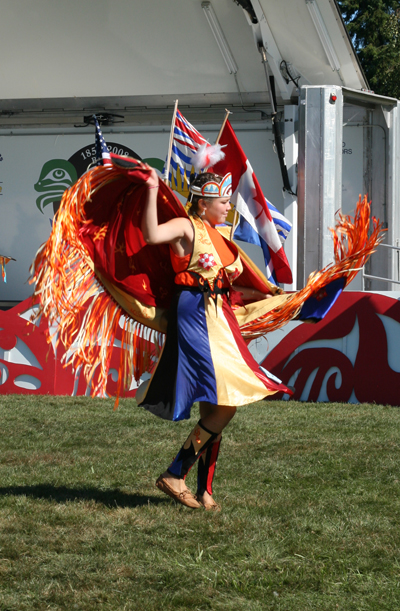
Photo: Robbin Whachell
|
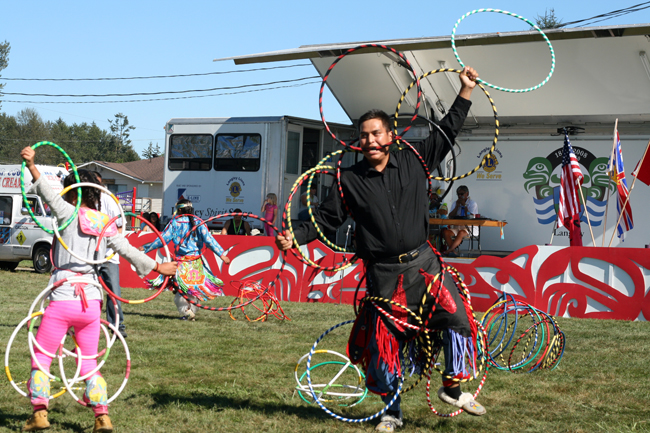
Native American Hoop Dance is a form of storytelling dance incorporating anywhere from one to 30 hoops as props, which are used to create both static and dynamic shapes, or formations, representing various animals, symbols, and storytelling elements. It is generally performed by a solo dancer with many hoops. The hoop dance was recently feature in Nelly Furtado's music video, "Big Hoops (Bigger The Better)"
Photo: Robbin Whachell
|
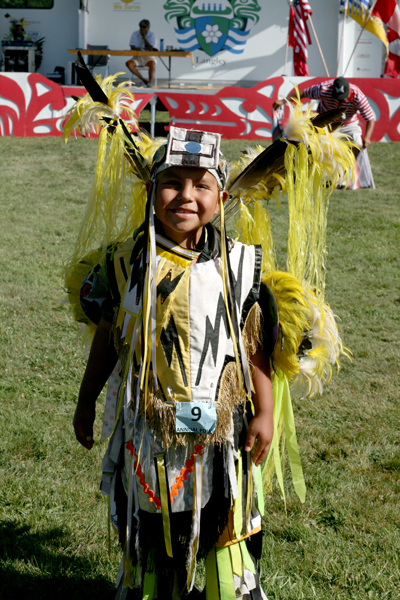
Happy to be here! A young native boy in his regalia smiles for the camera. Photo: Robbin Whachell
|
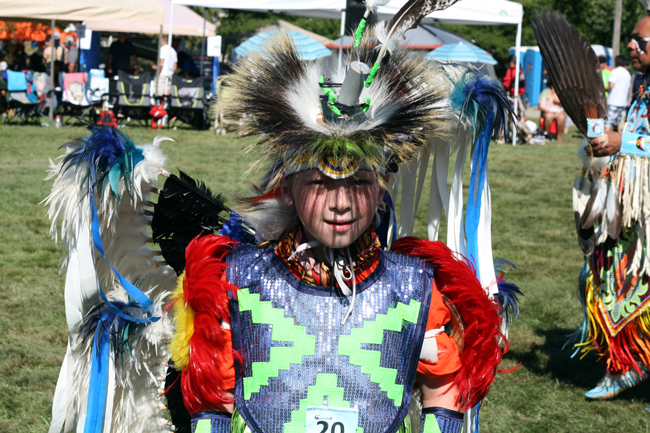
A young Metis boy in his regalia Photo: Robbin Whachell
|
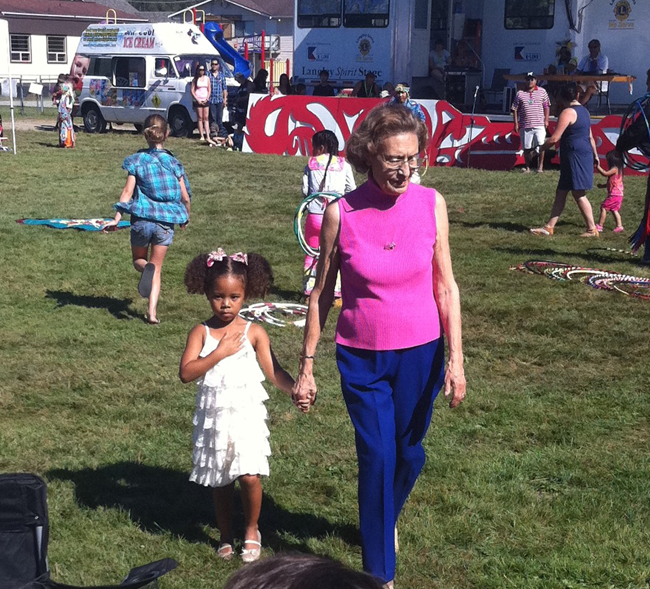
My 78 year old mother with her 4 year old great-granddaughter walk from donating in the circle. Photo: Allynne Nixon
|
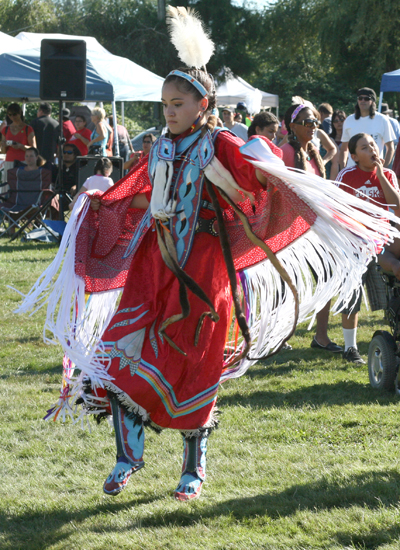
A Native girl during the closing of the circle. Photo: Robbin Whachell
|
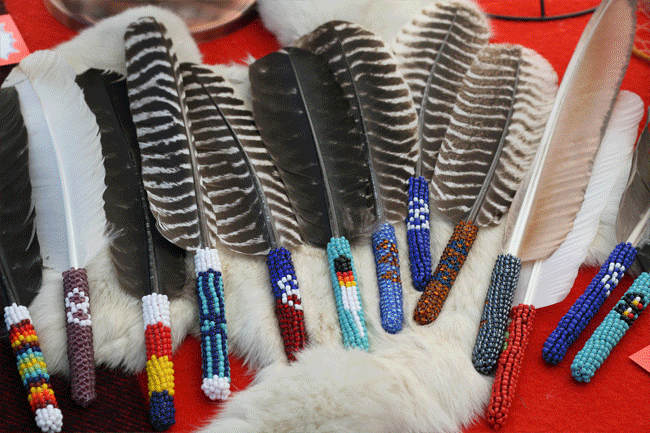
Native crafts include bead-work, feathers, carvings and leather. Feature here are moccasins, bundled sage, and Metis symbol stickers. Photos: Robbin Whachell
|
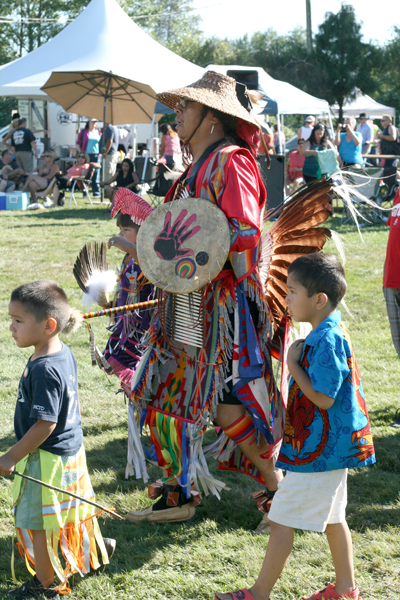
Closing the Circle, dancers go around the circle to symbolize closing the circle at the end of competition. Photo: Robbin Whachell
|
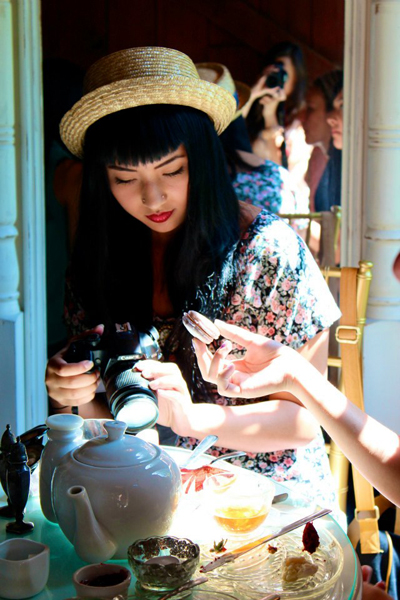
And to think it all started with High Tea with the Whachell women! Here's a high tea shot of my niece (Canadian-Japanese) Kiaana. Photo: Jackie Blower
|
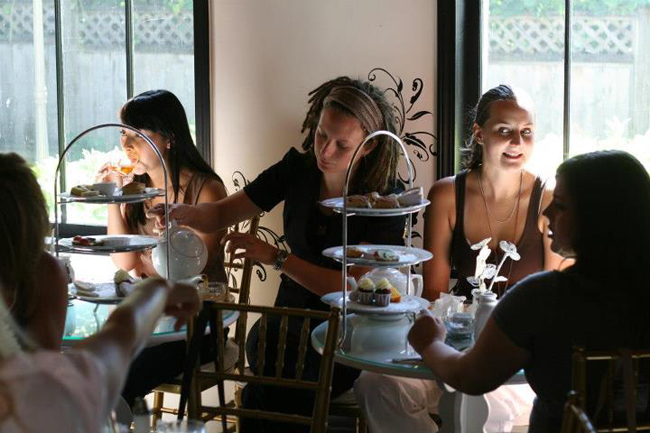
Four generations of the Whachell women meet for High Tea, little did we know we'd end up at a Pow Wow. Photo: Robbin Whachell
|
© Copyright 2012 by thebahamasweekly.com -



















